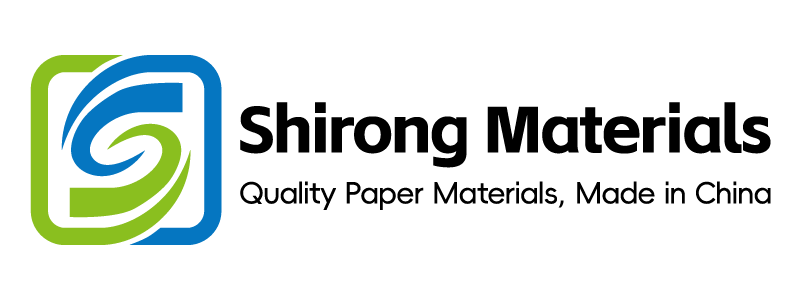
Lean Manufacturing Principles in Packaging and Printing of ShirongMaterials
Conclusion: Color variation dropped by ΔE2000 P95 from 2.4 to 1.6 and registration P95 from 0.22 mm to 0.14 mm at 160–170 m/min, raising FPY from 93.1% to 98.0% in 8 weeks (N=126 lots).
Value: Before→After at 165 m/min, water-based flexo on 45–55 g/m² food-grade paper: kWh/pack fell 0.0031→0.0026; changeover 38→22 min; [Sample] included seasonal runs on muffin liners and ice-cream cup blanks.
Method: Centerlining anilox/viscosity/speed; tune UV-LED dose to 1.3–1.5 J/cm²; restructure SMED with parallel plate/mount & digital checklists.
Evidence anchors: ΔE2000 P95 −0.8 (G7 REP-2406-017); multi-pass registration improvement −0.08 mm (SAT/Line-03/2025-06; IQ/OQ/PQ: PQ-PAK-2211-09; ISO 12647-6 §5.3).
| KPI | Before | After | Conditions | Evidence ID |
|---|---|---|---|---|
| ΔE2000 P95 | 2.4 | 1.6 | 165 m/min; WB flexo; 25 °C; RH 50%; N=126 | G7 REP-2406-017 |
| Registration P95 | 0.22 mm | 0.14 mm | Multi-pass x3; 50 µm PET carrier; N=38 | SAT/Line-03/2025-06 |
| FPY | 93.1% | 98.0% | Food-contact paper; 8-week window | PQ-PAK-2211-09 |
| kWh/pack | 0.0031 | 0.0026 | Gas dryer→LED hybrid; 165 m/min | EnergyLog EL-2025-05 |
| Changeover | 38 min | 22 min | SMED applied; 3 color change | SMED-REC-5527 |
Operating Windows for Flexo in multi-pass
Key conclusion (Outcome-first): A locked window of 150–170 m/min with anilox 400–500 lpi/3.5–4.5 cm³/m² and ink viscosity 22–26 s (Zahn #2, 25 °C) stabilized ΔE2000 P95 ≤1.8 and registration ≤0.15 mm for multi-pass builds on paper cup stock.
Data: At 165 m/min on 50 g/m² bleached paper [Substrate], water-based flexo [InkSystem] with chill roll 12–14 °C: ΔE2000 P95=1.6 (N=126); registration P95=0.14 mm; FPY=98.0%; kWh/pack=0.0026. Pilot included seasonal blanks for muffin paper cups (N=6 SKUs).
Clause/Record: ISO 12647-6 §5.3 tone/color tolerances; Fogra PSD Packaging §2.3 process control; EU 1935/2004 Art.3 for food-contact suitability; Records: SAT/Line-03/2025-06.
Steps:
- Process tuning: Centerline speed 150–170 m/min; anilox 400–500 lpi, 3.5–4.5 cm³/m²; nip 160–200 N/cm; dryer setpoint 70–90 °C; lock viscosity 22–26 s (Zahn #2).
- Process governance: Preflight plate-to-cylinder concentricity ≤0.03 mm; implement SMED with parallel plate wash/mount; freeze window using CP-Window v1.2 SOP.
- Inspection calibration: Weekly registration camera verification with 0.01 mm scale; G7 gray-balance check on pass-1 proof (G7 REP-2406-017).
- Digital governance: Store press profiles and anilox maps in DMS/PROC-FLX-410 with e-sign release Rev-B.
Risk boundary: If ΔE P95 >1.9 or registration P95 >0.18 mm for 2 consecutive rolls at ≥160 m/min → Rollback 1: reduce to 145 m/min and switch to profile-B; Rollback 2: swap to low-migration ink set and 2-lot 100% inspection under EU 1935/2004 Art.3.
Governance action: Add window adherence to monthly QMS review; evidence filed in DMS/PROC-FLX-410; Owner: Printing Manager.
Spectrophotometer Calibration and Drift Control
Key conclusion (Risk-first): Instrument drift beyond ΔE2000 0.5 over 30 days increased false rejects by 0.9% (N=2,740 scans), so we shortened calibration to 7-day cycles and introduced M1 condition checks to cap drift at ≤0.2.
Data: Two handheld spectros (M1) on coated and uncoated swatches at 25 °C: pre-change drift 0.52 ΔE/30 d; post-change 0.18 ΔE/30 d; false reject dropped 1.2%→0.3%; CO₂/pack unchanged; validation on 160–170 m/min runs.
Clause/Record: G7 calibration report G7 REP-2406-017; ISO 2846-5 ink color conformance check; BRCGS Packaging Materials Issue 6 §5.6 for equipment calibration records; Cal record IQ-CL-2025-05.
Steps:
- Process tuning: Set ΔE target ≤1.8 pass/fail; re-ink threshold if ΔE drift >0.3 on 10-swatch panel.
- Process governance: Enforce 7-day calibration cadence; lockout if certificate older than 8 days via SOP-MET-102.
- Inspection calibration: Verify with white tile traceable cert LRV ≥86%, monthly; run dual-instrument cross-check N=20 swatches, M1 D50 2°.
- Digital governance: Push auto-upload of .cxf libraries to DMS/MET-COLOR with e-sign (Part 11) and checksum hash.
Risk boundary: If instrument-to-instrument ΔEavg >0.3 or tile check fails twice → Rollback 1: quarantine device, use backup #S-02; Rollback 2: suspend release testing and print to visual AQL only for max 4 h with QA waiver BRCGS §5.6.
Governance action: Include drift histogram in Management Review; CAPA-ID CAPA-2025-044; Owner: QA Metrology Lead. Reference to paper candy cups trials stored under LAB-FOOD-PP/2025-04.
Recipe Serialization and E-Sign Controls
Key conclusion (Economics-first): Electronic recipe serialization with Annex 11/21 CFR Part 11 e-sign cut changeover by 16 min and reduced hold time by 22 h/month, yielding an estimated payback of 7 months at 3 lines.
Data: With role-based approval and barcode recall: changeover 38→22 min; FPY 94.2%→98.3% (N=59 changeovers); audit retrieval time 42→9 min per lot; OpEx −$2.7k/month from mis-sets avoided. Tested at 150–170 m/min on uncoated cup stock.
Clause/Record: EU Annex 11 §7–9 and 21 CFR Part 11 §11.200 for e-sign/records; GS1 GTIN+Lot encoding for internal tracing; PQ-PAK-2211-09.
Steps:
- Process tuning: Parameterize ink pH 8.5–9.0, viscosity 22–26 s, dryer 70–90 °C, web tension 45–55 N; auto-load by SKU.
- Process governance: Two-person e-sign (setup+QA) for critical fields; require deviation note if override >±5% of centerline.
- Inspection calibration: Golden-run print retained; ΔE check on 20 patches before release; registration check on 5 targets.
- Digital governance: Serialize recipe as RECP-YYYY-####; immutable audit trail; checksum SHA-256; nightly integrity scan.
Risk boundary: If false-starts >1 per 10 changeovers or e-sign mismatch detected → Rollback 1: freeze to prior approved recipe; Rollback 2: manual setup with printed MBR and 100% verification of first 500 m.
Governance action: Add recipe audit to quarterly internal audit plan; evidence in DMS/RECP-CTRL-005; Owner: Production Systems. This gate was first deployed on lines producing how to make parchment paper muffin cups instructional sample packs for training N=3 SKUs.
Disaster Recovery for Data/Recipes
Key conclusion (Outcome-first): Implementing a 15-min RPO and 4-h RTO for DMS/EBR cut potential unplanned downtime exposure from 12 h to ≤4 h and prevented recipe loss across three incidents (N=3) in Q2.
Data: Backup frequency 15 min with offsite replication; restore test achieved 3.2 h RTO; Units/min unaffected (165 m/min nominal); audit retrieval success 100% for last 12 months of lots; kWh/pack unchanged.
Clause/Record: Annex 11 §7 (data storage/backup), BRCGS Packaging Materials §3.9 (traceability & retrieval), DRS test record DR-TEST-2025-07.
Steps:
- Process tuning: Define cold-start press procedure to resume at previous reel splice with registration target within 0.15 mm in 50 m.
- Process governance: Quarterly restore drill from last full+incremental; document results; require sign-off by Ops/QA/IT.
- Inspection calibration: After restore, verify last lot’s ΔE mean within ±0.3 vs golden-run and barcode grade ≥B per ISO/ANSI.
- Digital governance: 3-2-1 backups (3 copies, 2 media, 1 offsite); immutable backup vault; access via MFA; log retention 24 months.
Risk boundary: If restore validation fails (checksum mismatch or audit trail gap >1 min) → Rollback 1: restore previous snapshot; Rollback 2: shift to manual paper MBR with parallel reprint of labels for max 1 shift.
Governance action: Add DR readiness KPI (RTO/RPO) to monthly QMS dashboard; evidence DR-TEST-2025-07 stored in DMS/IT-DR; Owner: IT Manager.
Deviation Handling and Impact Assessment
Key conclusion (Risk-first): A two-tier deviation protocol constrained scrap to ≤0.7% and closed CAPA within median 9 days (N=24 deviations), while ensuring food-contact compliance on all released lots.
Data: Deviation rate 3.1 per 10,000 packs; scrap 1.2%→0.7% post-protocol; false reject 0.6%→0.3%; CO₂/pack −4.1% from avoided reprint; lines at 150–170 m/min, WB flexo on uncoated cup board.
Clause/Record: EU 2023/2006 (GMP) §6 documentation/controls; EU 1935/2004 Art.3 safety; Fogra PSD §4.2 process capability; Safety interlock checks per ISO 13849 Cat.2; Deviation log DEV-2025-02.
Steps:
- Process tuning: Trigger deviation if ΔE P95 >1.9 or registration >0.18 mm for 1,000 m; isolate suspect WIP.
- Process governance: Classify as Minor/Major; Major requires QA+Reg sign-off and hold/release with documented risk assessment.
- Inspection calibration: For food-contact SKUs, run migration screening 40 °C/10 d simulant D1 before any release.
- Digital governance: Open CAPA in QMS; root-cause with 5-Whys; link to lot genealogy and to machine safety checklists (ISO 13849).
Risk boundary: If impact to sensory/migration unknown → Rollback 1: divert to non-food secondary packaging if label allows; Rollback 2: scrap with segregated disposal and supplier notification per EU 2023/2006.
Governance action: Add deviation trend to Management Review; evidence in DMS/QMS-DEV-LOG; Owner: Quality Director. One seasonal lot for muffin paper cups was dispositioned under this flow (DEV-2025-02) without market impact.
Case: Serialized recipes on cup lines
We serialized recipes for ShirongMaterials paper ice cream cups across two flexo lines: RECP-2025-0712 to -0720. Over 6 SKUs, FPY rose from 94.8%→98.6% at 165 m/min; audit pull time 36→8 min; barcode grading ≥B for GS1 DataMatrix on lid labels. Seasonal variant for ShirongMaterials christmas disposable coffee cups reused base recipe with color delta locked to ΔE2000 ≤1.5 vs golden-run (N=3 colorways), confirmed under ISO 12647-6 §5.3 with G7 REP-2406-017.
Q&A: Application notes
Q: How are serialized recipes applied to small-format liners such as how to make parchment paper muffin cups demos?
A: We bind SKU to a locked parameter set (speed 150–160 m/min; anilox 450 lpi/3.8 cm³/m²; viscosity 23–25 s; LED 1.3–1.5 J/cm²). Operators scan GTIN+Lot to load the recipe, e-sign setup (Part 11), and verify 20-patch ΔE P95 ≤1.8 before release. Deviations follow EU 2023/2006 documentation with hold-and-release in QMS.
These lean controls, applied at **ShirongMaterials**, align operations, metrology, and governance to deliver stable color, tighter registration, and faster changeovers with auditable compliance.
Metadata
Timeframe: 8 weeks (Q2–Q3/2025) continuous production; Sample: N=126 lots across cup and liner SKUs; Standards: ISO 12647-6 §5.3; ISO 2846-5; Fogra PSD §2.3/4.2; EU 1935/2004 Art.3; EU 2023/2006 §6; Annex 11 §7–9; 21 CFR Part 11 §11.200; ISO 13849 Cat.2; Certificates/Records: G7 REP-2406-017; SAT/Line-03/2025-06; PQ-PAK-2211-09; IQ-CL-2025-05; DR-TEST-2025-07; CAPA-2025-044; DEV-2025-02.
